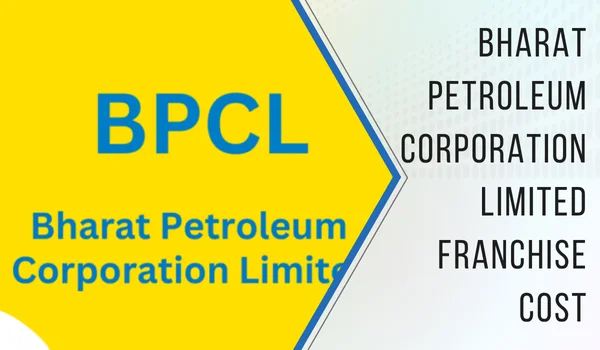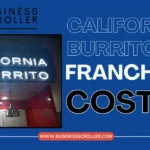If you’re considering entering the fuel-retail or petroleum-products business in India, a dealership or retail-outlet with BPCL is one of the most trusted options. Being a government-owned major (Maharatna) company, BPCL offers opportunities in petrol/diesel retail-outlets (ROs), LPG distributorships, CNG stations and allied businesses. This blog post offers a detailed guide on: what the BPCL franchise/dealership model looks like, what the investment and cost ranges are, typical ROI expectations, eligibility criteria and the precise steps to apply. I combine published BPCL guidelines with industry sources and practical insights to give you a realistic overview.
Why Consider a BPCL Dealership/Franchise?
- BPCL is one of India’s major oil‐marketing companies (OMCs) with a nationwide network of retail outlets and fuel infrastructure. Their “Dealers” page lists formal guidelines.
- Fuel retail remains a steady demand business (gasoline, diesel, lubricants) with large volumes, which means a well-located fuel station may generate consistent income.
- BPCL also offers alternate formats like CNG stations, LPG distributorships and ancillary services — opening more business models under its umbrella.
- Given strong brand-backing and regulatory frameworks, many entrepreneurs view a fuel-retail partnership with BPCL as among the more stable “big-ticket” franchise opportunities.
Franchise/Dealership Model: How BPCL Works
BPCL’s model is not a typical “franchise” in the sense of food-retail; it operates based on dealership/retail-outlet (RO) appointment, where an individual or firm is selected as a dealer/operator of a BPCL retail outlet under contract. Key features:
- Locations are advertised by BPCL (in newspapers and on website) for specific sites/areas; you apply for the location.
- Applicants must meet eligibility criteria (citizenship, age, education, financial strength, land/lease availability).
- After selection, an agreement is signed (BPCL dealer agreement) defining term, responsibilities (store construction, operations, supply, safety), and revenue shares/commissions.
- You provide/secure the land (owned or long-term lease), build infrastructure (canopy, tanks, fuel dispensers) and start operations. BPCL supplies fuel, lubricants, branding, etc.
- Revenue/profit model: You earn commission or margin from fuel sales (with fixed per-liter commission plus incentive schemes) and possibly retail shop/ancillaries. Because margins on fuel are low, ancillary services matter.
- Other BPCL opportunities: LPG agency/distributor, CNG station, lubricants distributor — each with different investment & process.
Cost & Investment of BPCL

Investment varies massively depending on location (rural/town/highway/urban), format (fuel station only vs fuel + retail shop) and whether you already own/lease land. Here are realistic ranges from published sources:
Investment Ranges
- One guideline: For rural retail outlet (RO) with BPCL, investment approximately ₹12 lakh or more quoted.
- For a regular urban/ high-traffic RO, sources suggest ₹25 lakh and upwards.
- A detailed announcement states: “Space or land area required 800 sqm to 2000 sqm; security deposit approx ₹5–20 lakh; construction costs ₹15–30 lakh; fuel-dispensing equipment ₹8–10 lakh; licensing/permits ₹1–2 lakh.”
- Some articles state “urban/highway dealerships: ₹50 lakh – ₹2 crore approx.”
Cost Components
- Land/lease costs: Many deals require you to own or lease land for 30 years (BPCL stipulates).
- Civil & canopy construction: Fuel station canopy, signage, offices, wash area.
- Fuel/dispensing infrastructure: Tanks, pipelines, dispensers, safety systems.
- Licensing & clearances: State‐level fuel retail licence, environmental clearance, weights & measures, fire safety.
- Initial working capital: Day-one operations, staffing, utilities.
- BPCL application fees / bidding: For some advertised sites you may bid; minimum bid may be required.
Summary
- Smaller rural outlet: ~₹12 lakh + land/lease if you already have land.
- Town/urban outlet: ~₹25-50 lakh+.
- Highway/mega format: Could go to ₹1 crore+ depending on land and construction.
Because of significant land/lease cost, location selection is critical.
Expected ROI & Payback
Fuel retail margins per litre are relatively low; the real profitability arises from volume, good site, ancillary retail (convenience store), diesel sales, lubricants, car-wash etc. From published figures:
- One website states: “Dealers generally earn ₹2–3 per liter on petrol, ₹1.50–2 per liter on diesel.”
- For example, if a station sells 5 lakh litres/year * ₹2 margin = ₹10 lakh annual gross profit before fixed costs. Then subtract rent, staffing, maintenance.
- Another guideline: For rural smaller outlets, ROI may be quicker; for urban high-rent sites payback may take 2-5 years.
- The key to good ROI is high throughput (litres sold), strong ancillary income, and low fixed costs (rent, utilities).
- Also, BPCL incentivises dealers for meeting sales segments and for retail shop revenue.
Realistic modelling
If you invest ₹30 lakh, aim for annual net profit of ₹6–10 lakh (20–30% return) if site is good. That suggests payback in 3–5 years. But if land cost is high or site slow, payback may stretch longer. Always build a conservative 24-36 month ramp.
Eligibility Criteria: Who can apply
BPCL’s dealer-selection brochure outlines several eligibility criteria:
Key criteria include:
- Citizenship: Indian national (NRIs allowed if they reside 182 days+ sometimes).
- Age: Minimum 21 years. For some categories, 65 years upper limit.
- Educational qualification: For retail outlets: usually minimum matriculation (10th) or equivalent.
- Location requirement: Suitable land/lease with defined size and frontage; land should be clear of disputes, long‐term lease (often 30 years).
- Financial capability: You must demonstrate funds for investment and working capital; often CA‐certified financials required.
- Additional criteria: Preference/reservation for categories: widows, ex‐servicemen, sports persons, SC/ST etc.
Step-by-Step: How to Apply
Here is a roadmap you can follow to apply for a BPCL retail outlet / dealership:
- Pre-assessment & Location Scouting
- Assess your investment capacity and decide desired location (rural/town/highway).
- If you own suitable land, great; otherwise scout for lease/land that meets BPCL’s size/frontage requirements.
- Estimate approximate throughput (traffic), competitor density, rent/lease cost.
- Monitor BPCL Advertisements
- BPCL advertises locations for RO dealership selection in newspapers and on its website.
- Keep track of “Dealer Selection Guidelines” brochure and advertisement.
- Download Application & Gather Documents
- Download application form from BPCL website (Dealer‐selection section).
- Documents you’ll typically need: Identity proof, age proof, land/lease docs, educational certificate, financial statements, bank statements, CA certificate for net worth/funds, photograph, etc.
- Submit Application & Pay Fee/Bid if Required
- Apply for the specific location by filling form + paying application fee (rural vs regular location fees differ).
- Some locations might involve bidding process — you place a bid for the depot/retail-outlet site; minimum bid amounts are published.
- Selection Process
- Applications are screened and shortlisted based on criteria (financials, land offer, age, category).
- Field investigation report (FIR) of the candidate may be done.
- Final selection may operate by draw/lots or by highest bid (depending on format).
- Agreement Signing & Outlet Setup
- Once selected, LOI is issued, and you sign dealership agreement (commonly 5 years or as specified).
- Undertake construction/fit-out of the station as per BPCL norms, tie up with civil works, tanks, canopy, equipment.
- Training, safety systems, supply chain set up.
- Launch & Operations
- After fit-out & approvals (Fire NOC, weights & measures, environmental) open operations.
- Ensure you follow BPCL’s supply, compliance, safety, branding & operations standards.
- Monitor operations: fuel throughput, margins, ancillary retail revenue (convenience store, car‐wash), maintenance costs.
Practical Tips & Key Considerations
Tips
- Land/lease cost drives profitability: Try to secure leased land with moderate rent rather than high upfront purchase.
- Ancillary revenue streams matter: Fuel margins are thin; include shop, snacks, retail, lubricants, EV charging (if possible) to boost revenue.
- Location is everything: High traffic, highway, truck routes boost volume; rural smaller sites have lower capex but also lower volume.
- Compliance & maintenance: Fuel retail business has strict safety, environmental, weights & measures norms — factor costs.
- Buffer for initial months: Ramp-up period may take 3-6 months; working capital buffer is essential.
Red Flags
- If the advertisement/site doesn’t have clear land/lease ownership suitability or traffic assessment.
- If your investment estimate ignores land/lease costs or civil construction costs.
- If proprietary bidding is extremely high with no realistic throughput to support it.
- If margin expectations are unrealistic (fuel margins are regulated and competition high).
- If you don’t have a fallback plan for ancillary revenue when fuel price cuts happen.
Final Thoughts
Becoming a dealership partner with BPCL offers a solid business opportunity but it is capital-intensive, location-sensitive and operations-heavy. Summarising:
- Investment: Roughly ₹12-30 lakh+ for smaller rural/town formats; high-traffic urban/highway formats may run ₹50 lakh to ₹1 crore+ when land cost included.
- ROI: Good sites with high throughput and ancillary services may give payback in 2–4 years; conservative modelling is essential.
- Eligibility: Indian citizen, age 21+, land/lease ready, financial/educational criteria, clean background.
- Application: Monitor BPCL’s dealer-selection advertisements, apply, submit docs, selection via bidding/draw, sign agreement, build & open.

Shashi Kant is the Founder and Editor of BusinessScroller.com, a leading platform for business insights, finance trends, and industry analysis. With a passion for journalism and expertise in business reporting, he curates well-researched content on market strategies, startups, and corporate success stories. His vision is to provide valuable information that empowers entrepreneurs and professionals. Under his leadership, BusinessScroller.com has grown into a trusted source for in-depth articles, customer care guides, and financial expertise.

